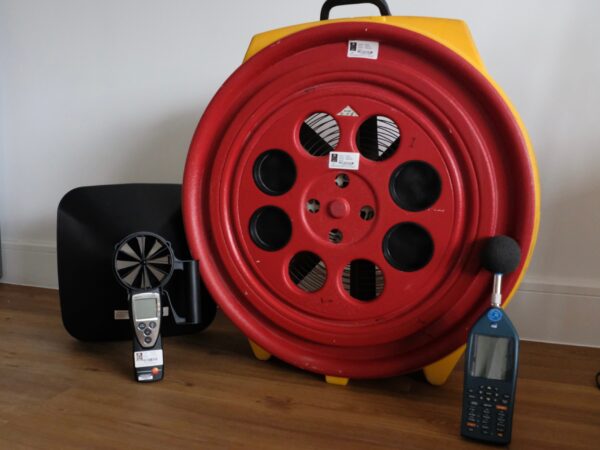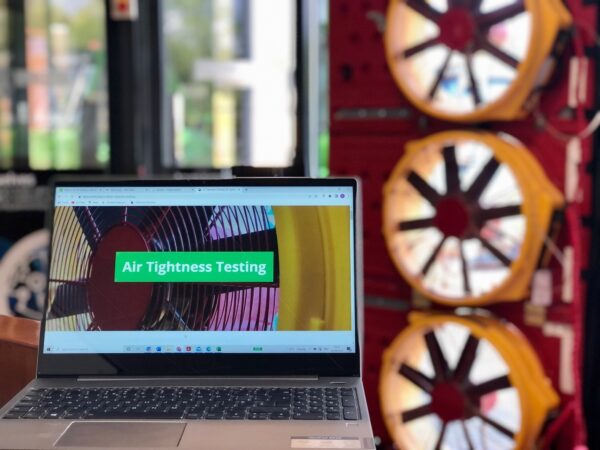Achieving a good Air Tightness result can save Energy Savings in Homes and is one of the most effective ways to reduce heating costs in dwellings. For instance, existing houses often have an air tightness score between 10m3/hr/m2 and 20m3/h/m2. This is quite a poor rating when you consider most new homes need to achieve an air leakage figure of around 5m3/h/m2 – this is where air tightness testing can help.
To explain in more detail 5m3/h/m2 means that no more than 5 cubic metres of air can escape per hour for every square metre of the envelope surface area, i.e., wall, floor. Although the Building Regulations has lowered its maximum permissible air leakage figure from 10 to 8, most new builds dwellings need to achieve a score of 5 or lower to pass their SAP calculations, which in then produces the EPC. When considering air tightness in existing houses, most could easily be brought down to a 5, which can lower your heating bills by up to 25%.

What is air tightness Testing?
The air tightness test measures the rate of air leakage through a building fabric by pressurising or depressurising a building and measuring the difference in pressure across different sections of wall, floor and roof, or the building envelope as its also called.
The test is undertaken by measuring the pressure difference between inside and outside the building, when all external doors and windows are closed, and all internal doors are open.
Air Tightness Testing can help lower energy Costs
Air leakage is a major issue for homeowners, especially in light of the rising heating and cooling costs across the UK and Europe. Air leakage can lead to higher energy consumption, higher carbon emissions and indoor air quality issues.
It is important to identify the location of the air leakage so that it can be fixed effectively. We can undertake a detailed smoke leakage survey which details each air leakage paths within the building envelope, so these can be sealed to lower the air leakage rate of dwellings. Air tightness and smoke testing is especially useful for identifying leaks in buildings, identifying areas where there are problems with insulation or drywall, identifying where windows and doors leak air, etc.

We can help with your air tightness testing
At APT Sound Testing we have large amount of experience in understanding the requirements of Approved Document L, along with extensive experience of carrying out thousands of successful air tightness tests on a wide range of developments across London and the UK. By working with our customers at the design and construction stages we provide advice and guidance on the most feasible ways to avoid air leakage and attain compliance for the air tightness test.
Please download our air tightness checklist for more information on how to prepare your building for the air tightness test.
At APT Sound Testing, we are happy to provide you with general air leakage design advice for your building envelope and onsite guidance. Upon completion of your project, we provide Nationwide UKAS Accredited Tightness Testing for domestic and commercial buildings to help you demonstrate Building Regulation Part L Compliance.
To find out more about our air tightness testing service or if you wish to discuss your project please contact us on 01525 303905 or email us at info@aptoundtesting.co.uk
